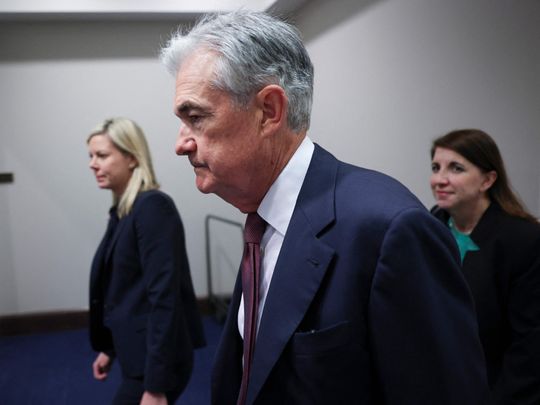
New York: US inflation and consumer spending accelerated last month, highlighting steady price pressures and demand that will keep Federal Reserve policy makers tilted toward raising interest rates further.
The personal consumption expenditures price index and a core measure that excludes food and energy, the Fed’s preferred inflation gauges, both exceeded projections. The Commerce Department’s data also surprised with the strongest gain in household spending since the start of the year.
Combined with other Friday reports showing a surge in business equipment orders and a pickup in merchandise imports, the data indicate demand continues to power ahead.
Consumer spending, adjusted for prices, increased 0.5 per cent, the strongest advance since the start of the year as outlays for goods and services picked up.
While the pace of inflation has moderated since peaking a year ago, resilient household demand and steady business investment risk keeping price pressures elevated. That’s the challenge facing Fed officials as they debate whether to pause their rate-hike campaign and assess implications of tighter policy on the banking system and economy more broadly.

Any persistence of inflation in the service sector, in part due to strong wage growth in those industries, risks keeping price growth above the Fed’s 2 per cent target for the foreseeable future.
A so-called supercore inflation measure closely monitored by the Fed - the cost of services excluding housing and energy - increased 0.4 per cent in April, the biggest month-over-month advance since the start of the year, according to Bloomberg calculations.
Fed Chair Jerome Powell has emphasized the importance of looking at such a figure to gauge the outlook for inflation. On a year-over-year basis, the metric rose 4.6 per cent.
Spending breakdown
On the spending side, the report suggests the economy got off to a solid start in the second quarter.
On an inflation-adjusted basis, outlays for goods rose 0.8 per cent, the most since January and reflecting stronger purchases of autos and pharmaceuticals. Outlays for services increased 0.3 per cent, also the biggest gain in three months and led by financial services and insurance as well as health care.
At the same time, inflation-adjusted disposable income, the main support to consumer spending, was unchanged after 0.2 per cent increases in the prior two months. The April figure was the weakest since mid-2022. The saving rate fell to 4.1 per cent.
Wages and salaries, unadjusted for prices, increased 0.5 per cent. Nominal incomes rose 0.4 per cent, an acceleration from the prior month.
Separate data showed nondefense capital goods orders - a proxy of demand for business equipment - jumped 1.4 per cent, the biggest advance since December 2021. Total bookings for durable goods rose 1.1 per cent.
In another sign of robust domestic demand, the US merchandise-trade deficit grew in April to $96.8 billion, the widest since October and above all estimates. Imports increased 1.8 per cent, while exports dropped. The data aren’t adjusted for inflation.












